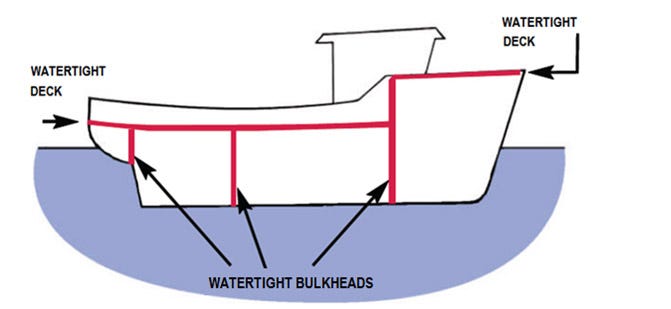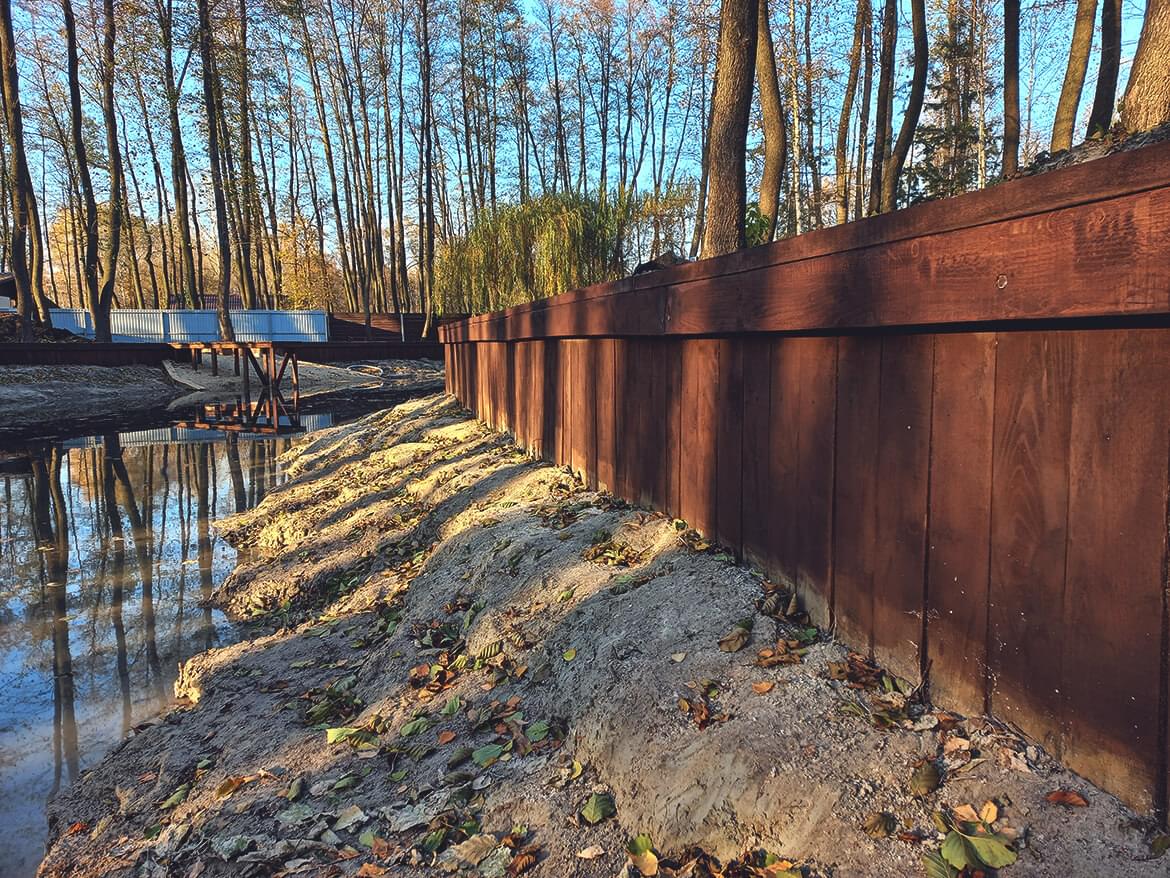Bulkhead on Lake Livingston in Urban Design: What You Should Understand
Wiki Article
Discovering the Different Uses of Bulkhead Frameworks in Modern Style
Bulkhead frameworks play a significant function in modern style, serving both practical and visual functions. They can define rooms, improve storage options, and improve illumination. In industrial setups, they function as prime focus that mirror brand name identification - Bulkhead on Lake Livingston. Furthermore, their integration usually supports sound monitoring and lasting practices. Recognizing the complete scope of their applications exposes much concerning contemporary layout trends and user experience. What cutting-edge uses bulkheads might arise in the future?Specifying Bulkhead Structures
Bulkhead frameworks play an important function in modern style, functioning as essential components in numerous structure designs. These structures are usually specified as elevated platforms or ceilings, commonly utilized to conceal mechanical systems, electrical wiring, or pipes. Bulkheads can be located in both commercial and residential setups, where they give a seamless blend of functionality and aesthetics. Their style can incorporate lighting fixtures and other decorative elements, improving the overall aesthetic appeal of an area.Generally constructed from products such as metal, drywall, or timber, bulkheads can be personalized to fit the architectural design and demands of the building (Bulkhead on Lake Livingston). They offer not just to hide unsightly framework yet additionally to develop defined areas within open rooms. By managing the flow of a space, bulkheads add to the spatial company, making them a considerable aspect of contemporary building method. Their interpretation encapsulates both visual and useful measurements.
Practical Applications in Residential Layout
Bulkhead structures play an important duty in domestic layout by assisting in area optimization methods that take full advantage of functional locations. Additionally, they add aesthetic design elements that improve the aesthetic allure of living rooms. In addition, these frameworks offer essential structural support solutions, ensuring the stability and security of the home.Space Optimization Techniques
As modern domestic layouts progressively focus on efficient usage of area, ingenious techniques emerge to make the most of performance without giving up visual appeals. One famous strategy includes the assimilation of bulkhead structures, which can mark locations while giving necessary storage options. These structures can be employed to create vertical storage space devices that improve both company and access. Additionally, multi-functional furniture, such as foldable tables and exchangeable sofas, matches bulkhead designs, enabling spaces to adjust to varying demands. Open up layout even more optimize spatial flow, encouraging adaptability in use. Integrating built-in shelving and recessed lighting within bulkheads additionally adds to a streamlined atmosphere, making sure that fully of room is used properly and sympathetically within the total design.Aesthetic Layout Elements

Structural Support Solutions
In modern household layout, an effective architectural assistance remedy is necessary for maintaining the stability of spaces while maximizing format and functionality. Bulkhead frameworks play a significant duty in this scenario, working as both assistance and partitioning elements. They can conceal mechanical systems, such as plumbing and electric wiring, while supplying reinforcement to the ceiling and floor systems. By strategically putting bulkheads, designers can produce defined areas within open layout, improving usability without compromising structural stability. Additionally, these frameworks can accommodate lighting fixtures, adding to both aesthetic appeals and usefulness. To sum up, bulkhead structures are important in household layout, using versatile assistance options that improve both the capability and visual allure of living areas.Enhancing Appearances in Commercial Rooms
When industrial spaces embrace innovative bulkhead frameworks, they not only specify physical borders yet likewise substantially boost the total aesthetic appeals of the setting. These architectural components work as aesthetic focal points, drawing attention and developing a feeling of intrigue. By incorporating varied products such as timber, glass, or steel, bulkheads can reflect a brand name's identity and objective, adding to a cohesive design.The calculated placement of bulkheads can adjust light and shadow, including depth and dimension to or else flat rooms. This interplay can change an industrial area into an inviting atmosphere, urging client involvement. Furthermore, making use of color and appearance in bulkhead style can stimulate certain emotions, enhancing the general customer experience. Inevitably, the thoughtful integration of bulkhead frameworks elevates the visual allure of business spaces, making them not only useful but additionally visually charming, therefore fostering a long-term impression on visitors.
Acoustic Performance and Noise Management
Efficient acoustic performance plays an essential role in modern-day architecture, particularly within commercial spaces where sound administration is essential. Bulkhead frameworks can substantially enhance acoustic qualities by taking in sound, reducing reverberation, and use this link mitigating noise transfer between locations. These functions are specifically valuable in environments such as workplaces, restaurants, and theaters, where clear communication and a pleasant acoustic experience are paramount.The calculated positioning and style of bulkheads can aid produce sound-buffer zones, efficiently separating noisy areas from quieter ones. Materials used in bulkhead building, such as soft finishes and acoustic panels, add to their sound-dampening capacities. In addition, the unification of bulkheads enables the combination of sound-absorbing aspects without compromising aesthetic charm. By dealing with acoustic performance, designers can create unified atmospheres that boost convenience, improve customer experience, and promote performance, making bulkheads a crucial part in the style of modern business rooms.
Incorporating Bulkheads for Effective Room Use
Frequently overlooked, the combination of bulkheads in building design can greatly boost space application in modern-day buildings. These structural elements serve numerous functional functions, using a method to conceal mechanical systems, electric wiring, and plumbing without jeopardizing aesthetics. By strategically positioning bulkheads, designers can develop defined locations within open floor strategies, therefore assisting in better company and flow.Bulkheads can integrate storage space services and illumination functions, making best use of the performance of or else thrown away upright space. In domestic settings, they may define zones such as kitchens or living areas, while in industrial areas, they can boost the efficiency of designs by clearly marking paths and work locations.
Ultimately, the thoughtful assimilation of bulkheads contributes to an extra aesthetically enticing and well organized setting, permitting adaptable spaces that can evolve with the needs of their occupants. This approach not just maximizes room however likewise cultivates a much more harmonious communication in between type and function.
Bulkheads in Public Architecture

Building Aesthetic Enhancements
While many building aspects goal for functionality, bulkheads in public style serve a double purpose by boosting aesthetic charm. These structures typically create aesthetic passion with their design, integrating seamlessly with surrounding elements. By using various materials, appearances, and colors, bulkheads can add to a distinct identification for public spaces, such as flight terminals, galleries, and collections. Their calculated placement helps to mark locations, guiding site visitors while adding deepness to the overall style. Additionally, bulkheads can accentuate illumination, creating dynamic ambiences that change throughout the day. This visual enhancement not only elevates the site visitor experience but also promotes a local color, making bulkheads an essential consideration in contemporary public style. On the whole, bulkheads embody the fusion of kind and function.
Structural Support Solutions
As engineers seek ingenious means to improve the architectural integrity of public rooms, bulkheads become important parts in the style and construction process. These frameworks supply critical assistance, particularly in areas subject to hefty foot traffic or dynamic lots. By distributing weight equally, bulkheads aid prevent structural failing while permitting functional style choices. In big places, such as stadiums and convention centers, bulkheads are commonly incorporated right into the general architectural structure, ensuring security and safety. Furthermore, they can promote the incorporation of energies and mechanical systems, adding to the effectiveness of area usage. Inevitably, bulkheads represent a crucial service in modern public design, reinforcing both functionality and safety and security in community-focused settings.Environmental Security Steps
Incorporating environmental management measures into public design has actually come to be increasingly vital as urban developers focus on sustainability together with architectural assistance. Bulkhead structures serve a dual function hereof, serving as obstacles versus disintegration and flooding while all at once boosting the visual appeal of city landscapes. Their layout usually includes natural components such as plants, which can improve air quality and offer habitats for wildlife. In addition, bulkheads can be crafted with permeable materials that enable water absorption, minimizing drainage and advertising groundwater recharge. This assimilation of ecological considerations not only maintains the atmosphere however additionally promotes neighborhood resilience versus environment change. By utilizing bulkheads successfully, architects add to lasting urban growth that aligns with modern ecological objectives.Future Fads in Bulkhead Style
Emerging trends in bulkhead layout reflect a check this site out growing emphasis on sustainability, innovation, and performance in modern-day style. Developers are progressively integrating environmentally friendly materials, such as recycled composites and bioplastics, to minimize environmental effect. Additionally, the integration of wise modern technology is ending up being common, enabling bulkheads to offer multi-functional objectives, consisting of power storage space and climate control.
In urban setups, modular bulkhead systems are read obtaining traction, supplying versatility in design and simplicity of setup. These systems can be adapted to numerous landscapes, permitting for reliable room use. In addition, visual considerations are progressing; bulkheads are currently being made to boost visual allure, frequently incorporating creative aspects that reverberate with local culture.
As environment resilience ends up being a top priority, future bulkhead designs will likely prioritize flooding protection and stormwater management, ensuring structural integrity while dealing with environmental obstacles. This change symbolizes a holistic strategy to style that fulfills both human needs and environmental responsibilities.
Frequently Asked Questions
What Products Are Commonly Made Use Of for Bulkhead Building And Construction?
Common products for bulkhead construction consist of concrete, steel, hardwood, and composite products. These alternatives give durability, architectural integrity, and resistance to ecological factors, making them appropriate for different applications in building and design jobs.How Do Bulkheads Influence Building Energy Performance?
Bulkheads enhance building power efficiency by supplying thermal insulation and reducing air leak (Bulkhead on Lake Livingston). They help keep indoor temperatures, thus reducing home heating and cooling needs, eventually resulting in reduced power prices and improved environmental sustainabilityExist Any Building Ordinance Certain to Bulkhead Structures?
Yes, building codes specific to bulkhead frameworks exist, differing by area. These regulations usually address safety, structural stability, and access, guaranteeing that bulkheads meet required requirements for building and construction and style within an offered jurisdiction.Can Bulkheads Be Quickly Modified or Eliminated Later On?
Bulkheads can commonly be modified or removed, relying on their design and building and construction. Such modifications may call for mindful planning and adherence to building codes to guarantee architectural honesty and safety and security are kept throughout the procedure.What Are the Costs Connected With Setting Up Bulkhead Frameworks?
The costs linked with mounting bulkhead structures can differ substantially, typically influenced by materials, design complexity, and labor. Generally, expenditures vary from modest to high, depending upon the job's specific demands and place.Bulkhead frameworks play an essential duty in modern design, serving as necessary parts in different building designs. Bulkhead structures play a vital function in residential style by facilitating area optimization strategies that make best use of functional locations. Usually ignored, the assimilation of bulkheads in architectural style can considerably improve room use in modern buildings. As designers look for cutting-edge means to enhance the structural integrity of public rooms, bulkheads arise as important components in the style and building and construction process. The prices associated with setting up bulkhead structures can vary substantially, usually affected by products, layout complexity, and labor.
Report this wiki page